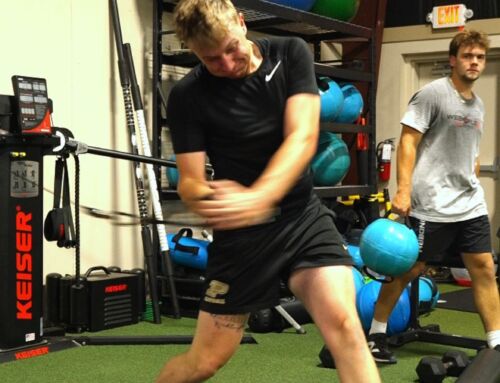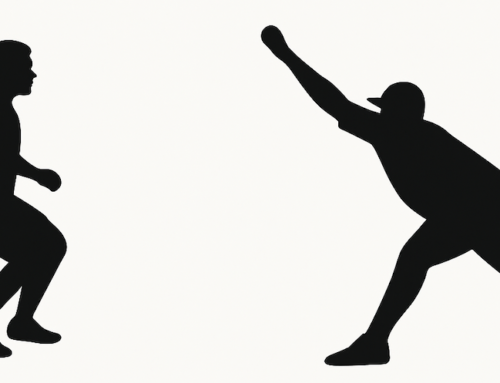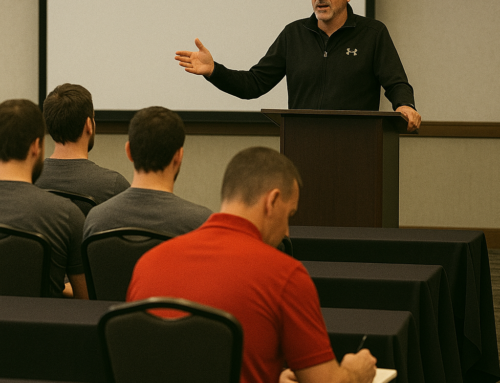
Anatomy Of Lead Leg Blocking
Over the past few years, the concept of “lead leg blocking” has emerged as an accepted and sought after component of high -level throwing. When training to “block “the lead leg, the athlete is encouraged to execute a move that intentionally, and rapidly actively extends the front knee as the lead leg absorbs the force of landing. Bracing of the front leg in this manner, seemed appropriate. Many high-level pitchers were noted to straighten their knee as they advanced their back leg forward. Coaches and trainers often commented that the blocking maneuver “stabilized” the front leg and allowed for increased trunk acceleration that would produce high-velocity pitches.
The idea caught fire and spread throughout pitcher training community. Drills and exercises were designed and shared and social media demonstrating methods for teaching “lead leg blocking.” Many athletes were influenced by this “revolutionary” information, applied it to their training, and consciously attempted to execute it in their deliveries.
And many athletes became corrupted.
The truth is:
RAPID, INTENTIONAL EXTENSION OF THE FRONT KNEE CAN ACTUALLY DESTABILIZE THE LEAD LEG, DISRUPT PELVIC CONTROL, KILL VELOCITY AND COMMAND AND CAN PUT THE ATHLETE AT RISK FOR INJURY.
It’s time for a brief lesson in muscle physiology.
A muscle’s ability to produce force and the speed at which that muscle can produce force are both closely linked to the size shape of the muscle. In general, shorter muscles can produce large amounts of force but are not able to contract rapidly. Longer muscles produce less force, but they can contract more rapidly.

Every muscle or group of muscles has a length at which it is the most strong and stable. For example, the biceps are weak and unstable when the elbow is fully extended or when the elbow is fully bent. However, somewhere in the middle, there is a sweet spot that represents the “optimal length” at which the biceps is the strongest and the elbow is the most stable.
In general, longer muscles can be strong and stable at a wide bandwidth of lengths. Shorter muscles have a tiny range of lengths in which they are optimally strong.
Relationships of length/force and length/speed would be simple to apply if all muscles were aligned parallel to their tendon-bone attachments. If all muscles produced force specifically in line with the action of the muscle, identifying optimal positions would be easy.
Unfortunately, it’s more complex than that.
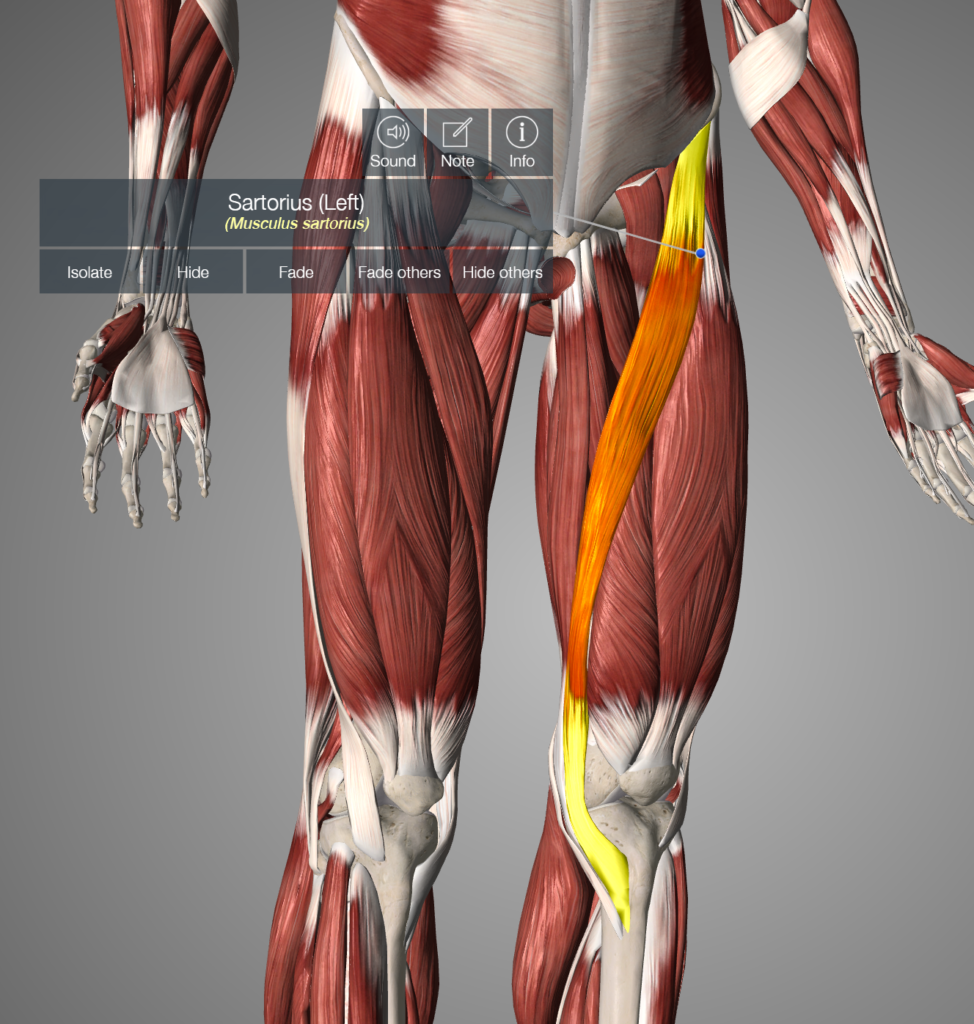
Muscles known as parallel-fiber muscles do indeed operate in this manner. An example of a parallel fiber muscle is the long, thin sartorius muscle that runs from the front of the pelvis, crosses the hip and knee, and inserts on the inside of the tibia. The sartorius muscle flexes, abducts, and externally rotates the hip and also assists with flexion of the knee. Because its fibers are aligned parallel to the origin and insertion of the muscle, the sartorius can produce force quickly, but it is unable to produce or absorb large forces.
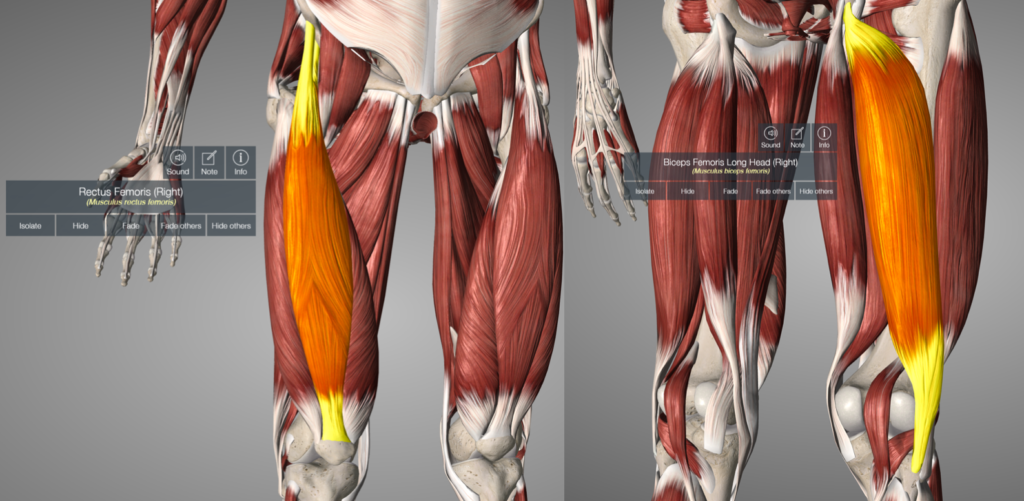
The hamstrings and the quadriceps are pennate muscles. The fibers of the quads and hamstrings attach in a slanted position relative to their tendons, placing the fibers of the muscles at an oblique angle to the line of force the entire muscles produces. Therefore, while the hamstrings and quads may appear optically long, their pennate orientation makes them functionally short. As such, they can create and absorb large amounts of force, but they cannot contract rapidly. Additionally, they become ineffective when they move outside of their narrow bandwidth of optimal length. For these reasons, the hamstrings and quads are vulnerable to instability and injury when subject to high speed or unpredictable movements.
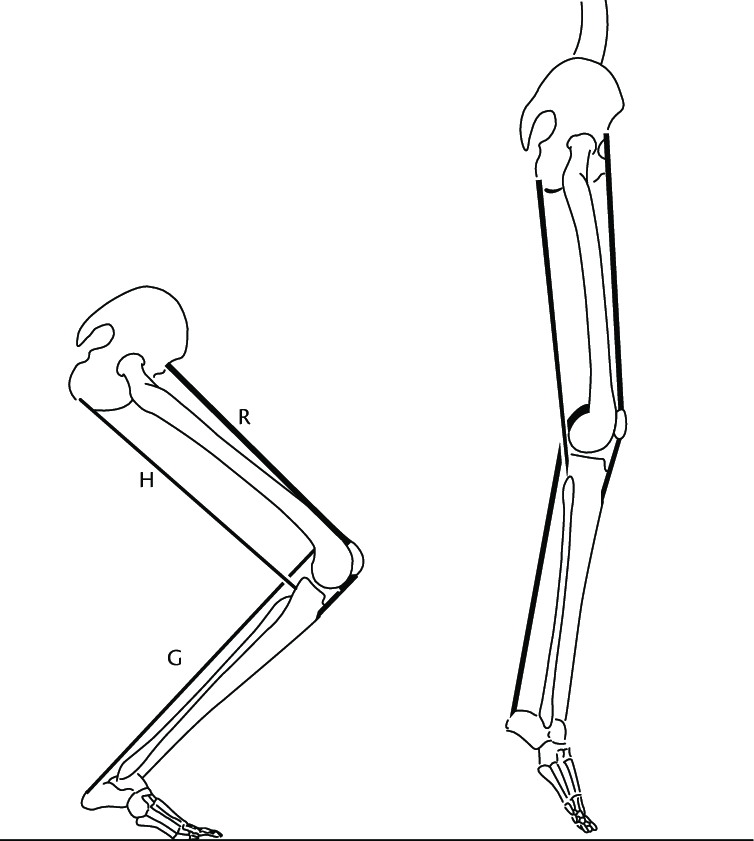
The quads and hamstrings rely on teamwork to compensate for their lack of contractile speed, When co-contracting at or near-optimal length, they achieve strength and stability and reduce the risk of injury. Such coordinated muscle activity demands a close coupling of the knee and hip joints. Each must be positioned to avoid full shortening or lengthening of the quads or hamstrings. Failure to respect this intricate joint coupling relationship is a recipe for poor performance or injury. Such is the case, for example, when a football player or a sprinter impacts the ground with the knee fully extended, and the pelvis is tilted forward (functionally flexing the hip). The quads are quickly loaded in an excessively shortened state, and the hamstrings are loaded rapidly very near to their most lengthened position. Exposure to high speed and high-intensity load at a suboptimal length renders the hamstrings insufficient to produce adequate force. This destabilizes the landing leg, pelvis, and trunk and leaves the athlete vulnerable to injury.
In pitching, the quads and hamstrings must absorb massive levels of force at extremely high speeds as the athlete reaches full weight bearing on the lead leg. To adequately handle the challenge, the quads and hamstrings must execute a well-timed, synchronized isometric co-contraction that serves as the foundation for controlling the stability of the pelvis. A stable pelvis then allows for the synergistic transfer of energy from the lower half to the arm. When the pelvis is stable, the abdominals and the back muscles can then reach optimal length and co-contract to facilitate rotation of the torso and back hip around the front leg. The arm is then advanced to release the ball in the stress-reducing and energy-efficient late launch, which is characteristic of the many high performing and durable throwers.
When the front knee is actively, intentionally, and rapidly extended, the quads are concentrically fired (shortened). Because of their pennate structure, the hamstrings are unable to match the speed and power necessary, and in fact, are often “reciprocally inhibited.”
The Law of Reciprocal Inhibition:
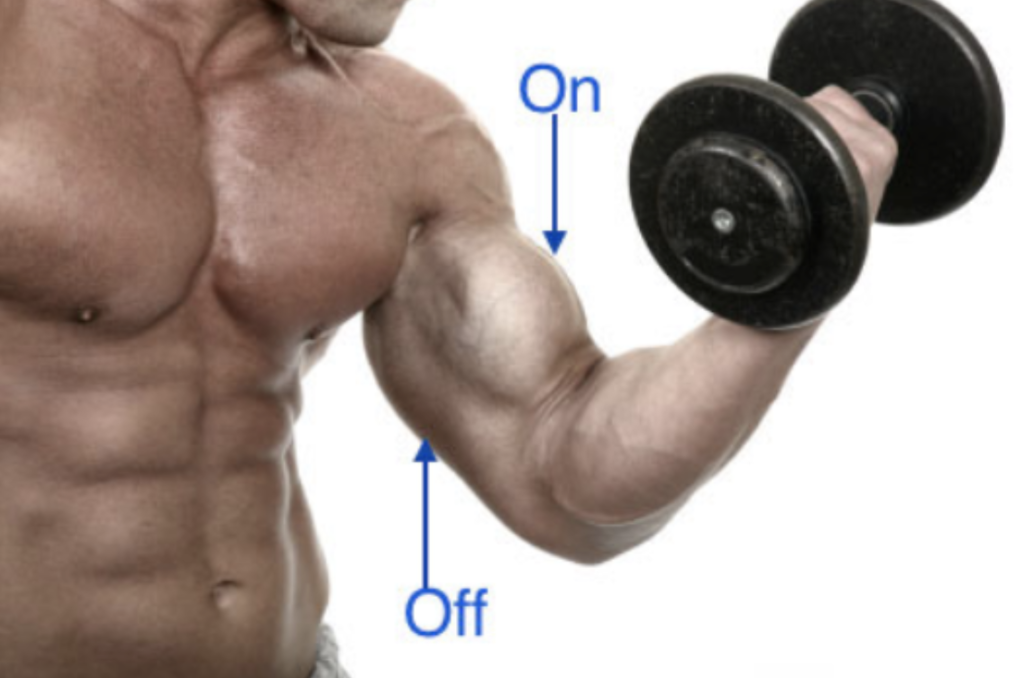
When a muscle or group of muscle is activated to move a joint or limb, the muscles that oppose that movement are reflexively inhibited. For example, if I want to bend my elbow by activating my biceps, brachialis, and brachioradialis, the triceps muscle, which usually straightens the elbow, must be turned off.
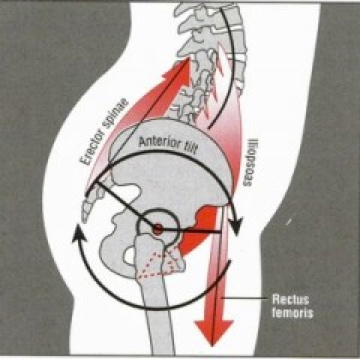
Because the hamstrings attach to the ischium or “the sit bone” on the back/bottom of the pelvis. When the hamstrings contract normally, they pull the pelvis into a posterior tilt. The quads (by way of the rectus femoris) attach to the front/top of the pelvis. When the quads are contracted, they tip the pelvis into a forward (anterior) tilt. When the quad and hamstrings are co-contracted, they hold the pelvis in a stable, neutral position, which then allows for the optimal function of the abdominals and back muscles.
When a pitcher intentionally and rapidly extends the front knee in an attempt to execute the ubiquitous “lead leg blocking” maneuver, he renders the hamstrings insufficient. The hamstrings become unable to participate in the joint coupling and co-contraction that would stabilize the pelvis.
Ironically, in an attempt to “stabilize” the front leg, the “lead leg block” actually creates instability in the landing knee and hip, and subsequently in the pelvis, the abdominals and in the low back.
A CRITICAL POINT:
In many (not all) high-level pitchers, the front knee achieves full extension. However, the knee extends as a consequence of a stable back leg, placing the lead leg on the ground in a manner that has the front foot traveling slightly backward just before landing. We call this “Swing Leg Retraction” and “Foot Plant From Above.”
When the athlete executes a first move that includes a well-controlled hip hinge, the gluteus medius, and gluteus minimus muscles are optimally positioned. They can grab the pelvis and tilt the free side slightly up in the frontal plane. You can read more about this in my blog about our Force Sensored Mound Research: Impulse and The GMs by clicking here.
As it turns out, it is not necessary to tilt the pelvis actively, and doing so can inhibit the GMs, which can cause the pelvis to flatten as the free side drops. When the trail hip is adequately hinged, the GMs and other hip muscles achieve rear leg “hip lock” ( a Frans Bosch precept). As the pitcher rides down the mound, the little GMs allow the athlete to gather, elastic energy in the back hip and the trunk. When the little GMs release their hold on the pelvis, the back hip naturally, passively, and rapidly rotates. The rear side of the pelvis turns forward (toward home plate). The lead leg should be placed under “pre-tension” (isometrically tensing all of the muscles) during flight. As the backside pelvis rotates forward, the leading side of the pelvis rotates backward (externally). This functionally internally rotates the leading femur in the hip socket. Tension on the backside hip flexors and the iliotibial band pull against the back leg, creating a “scissors” effect. This cross tension causes the pre-tensed lead leg hamstrings and gluteus maximus to move the lead hip backward toward second base (hip extension). This movement retracts the landing foot just prior to touch down, and it sets the stage for an adequate lead leg ground reaction Y force vector.
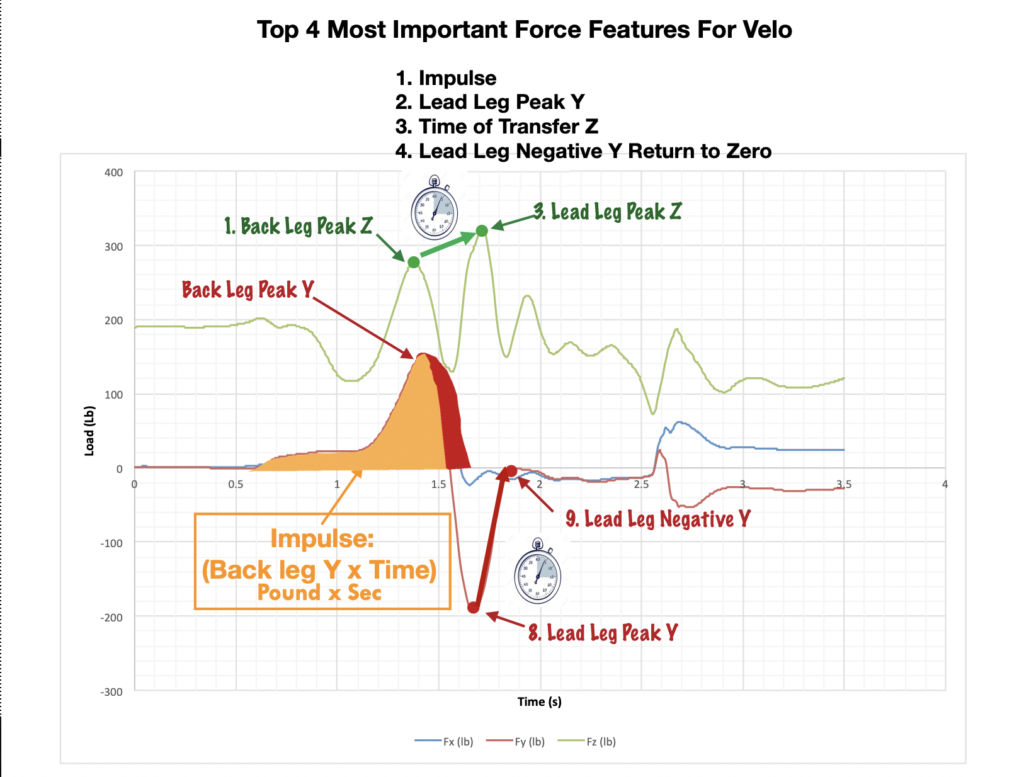
Upon landing, the Y force initially spikes forward, then drives the front heel into the back of the shoe. The subsequent ground reaction force changes direction from negative on the Y-axis (toward home plate). It returns toward second base until it reaches the zero line. As the trail leg continues to move forward (hip flexion0 and the back foot rolls toward the little toe (hip internal rotation), the front knee begins to straighten. When the backside of the pelvis rotates forward of the front hip — if the athlete possesses adequate hamstring flexibility — the front knee can achieve full passive extension. However, the full extension of the lead leg is not necessary. If the quads and hamstrings co-contract, the front leg, pelvis, and spine become stable.
So, as you might imagine, “lead leg block” is NOT a term we use at The Florida Baseball ARMory, and we would love to see it fade into oblivion. In our view, it’s not the idea or terminology that is the problem. But, the misinterpretation of what is actually occurring has become training corruption of the highest order.

The bottom line is this: Pitching is like picking up chicks. The first move is critical. You have to get the first move right, or you probably don’t have much of a chance.
There are three ways to access our services at The Florida Baseball ARMory
- Come to a Weekend SAVAGE Training Throwing and/or Hitting Camp: We hold these life-changing events just about once per month. CLICK HERE to learn more.
- Sign up for a more extensive experience with our Complete Game Summer Training Program. It’s five hours per day, five days per week, or more) of training that will fundamentally change the way you move. It will help you realize incredible gains in velocity, command, pitch shape, and arm health. Here’s the data from our 2019 Summer Program.
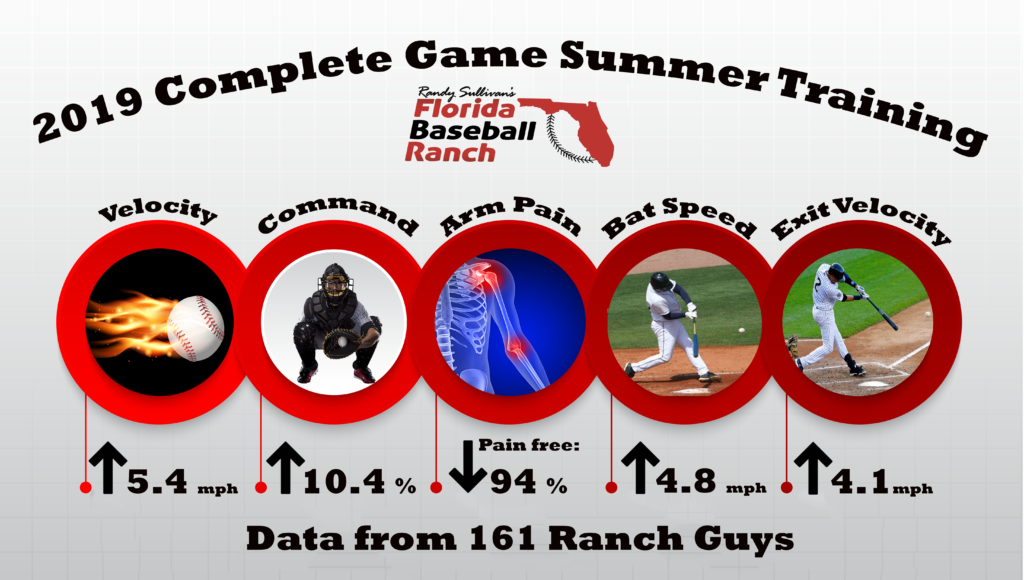
CLICK HERE to learn more
3. Call our CFO/COO, Amy Marsh at 866-STRIKE3 (866-787-4533) to schedule a Precision Strike, One Day, One-on-One Evaluation, and Training Program. Customize your training experience by adding on additional days/services as you desire. CLICK HERE to learn more, then call Amy at 866STRIKE3
We’ll see you at The ARMory.
CREDIT: The inspiration for this article is Frans Bosch’s new book: The Anatomy of Agility. Frans asked me to edit the English translation which is due out sometime in 2020. You’re going to love it! Thanks Frans!!

Randy Sullivan, MPT, CSCS CEO, Florida Baseball ARMory


